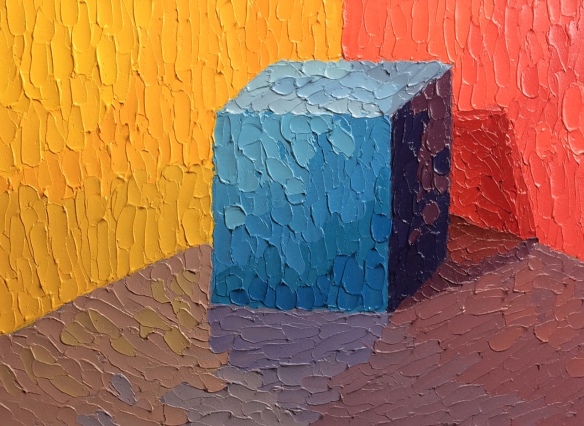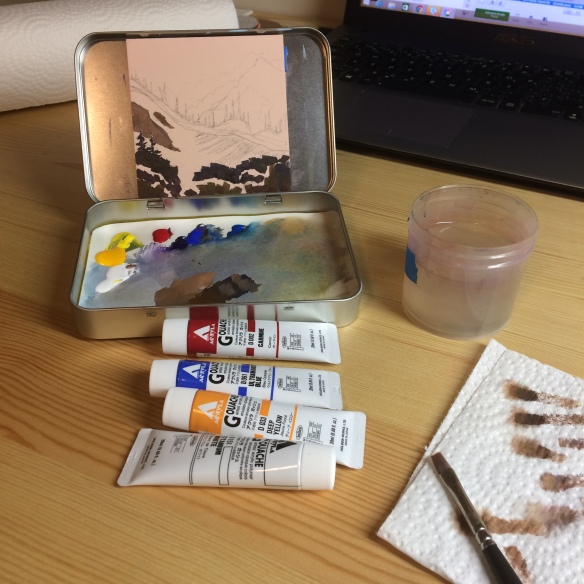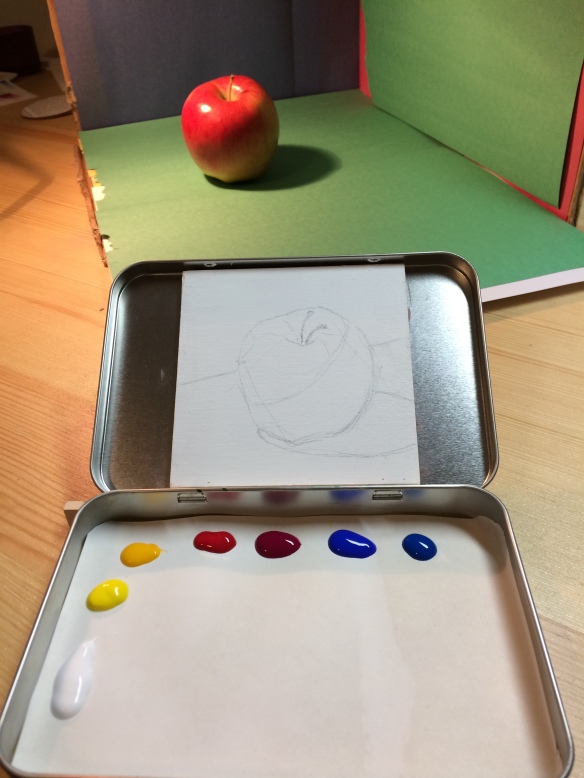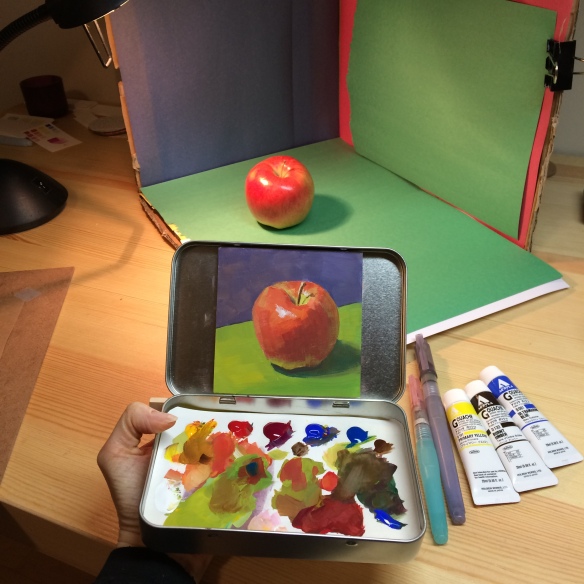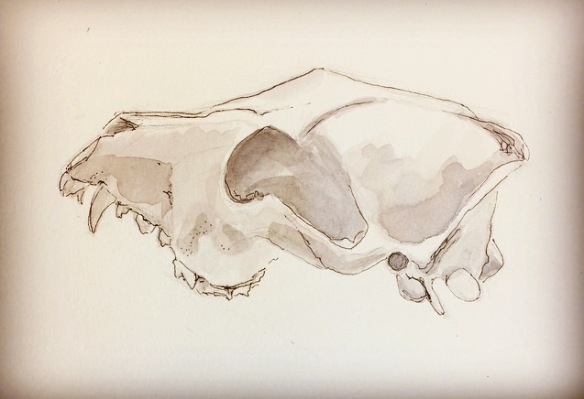This week I learned that it’s important to eat a balanced (metaphorical) diet of broccoli AND chocolate chip cookies.
The all-broccoli diet:
I’ve been following the exercises from the book “How to See Colour and Paint it” for the month of January. Last week, I spent two days on a lemon exercise. My brain fought me the whole way, because the lemon looked very orange in my warm light.
For the next three days, I worked on the same lemon, in the same setup, but lit with the cool light of my headlamp. The difference lighting makes is remarkable, which was neat to see:
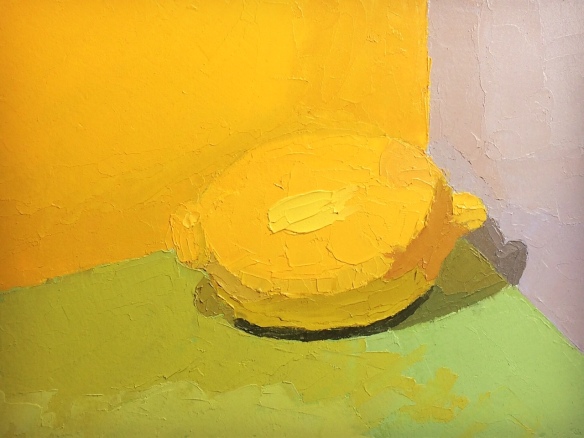

The thing is, doing these exercises is hard work. I’m staring at a part of the lemon through a little hole in a grey piece of plastic, holding my paint covered knife up to the hole, wrinkling my nose – is that shadow more orangey than what I mixed? Or more purpley? Squint, mix paint, look again, repeat.
Encouragingly, I found a study that said frustration is a sign that learning is taking place. It makes sense: Learning happens at the edge of your comfort zone.
But after 9 days of the all-broccoli diet, I started forgetting that I actually know something about making art, and that it can be loads of fun.
The diet of silver cake sprinkles:
On day 10 I quit the plan in rebellion. I tried gouache (opaque watercolour) for two days. But it was reactionary, and it didn’t feel so good either. It was just the next shiny thing I was intrigued by. Kind of like those shiny silver cake sprinkle balls – intriguing, pretty, but maybe not so great to eat.
The balanced diet of broccoli and cookies:
Mostly, I wanted to get back into a place of comfort and confidence. So on day 12 I did a lunchtime sketch of the shelf beside my office desk. It was genuinely fun to do, comforting and familiar. Like oatmeal chocolate chip cookies. With raisins. A little bit indulgent, a little bit wholesome.

Broccoli and cookies are welcome in my life.
Sophie

